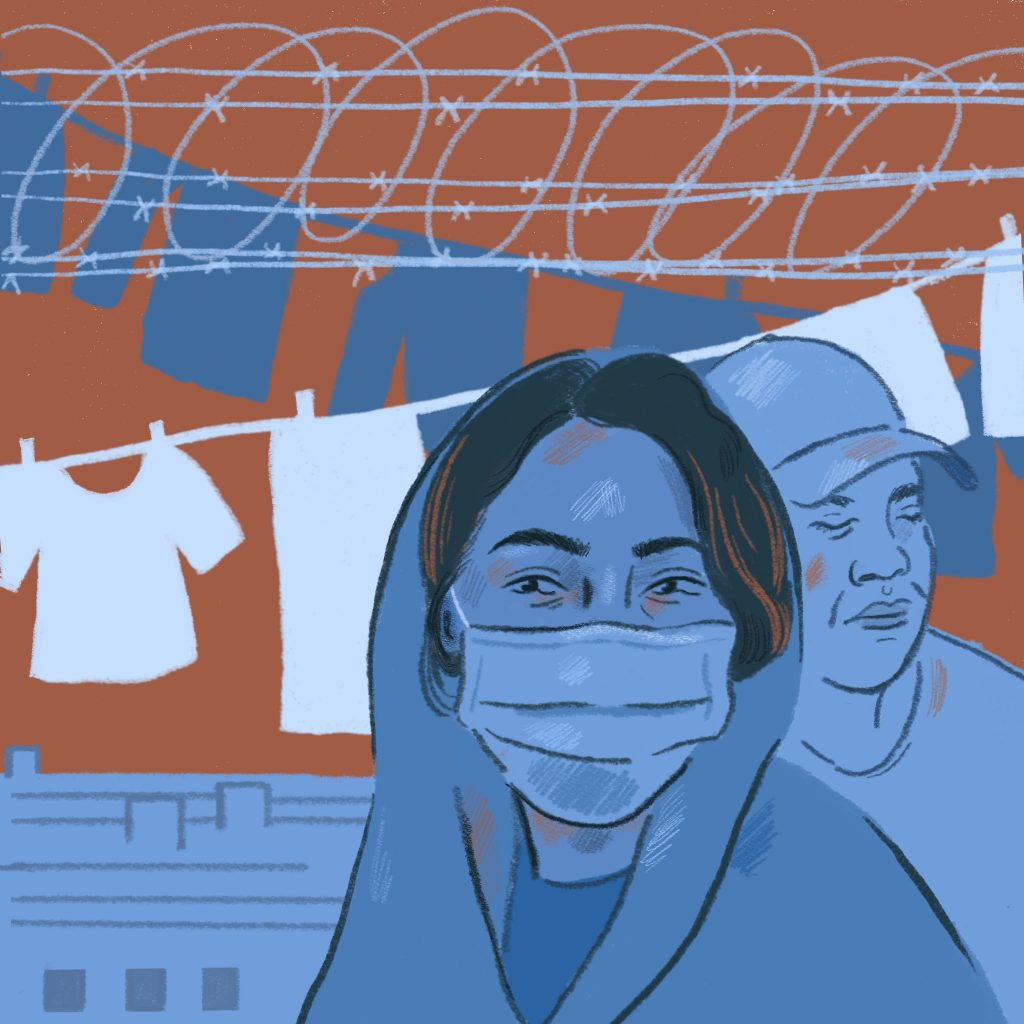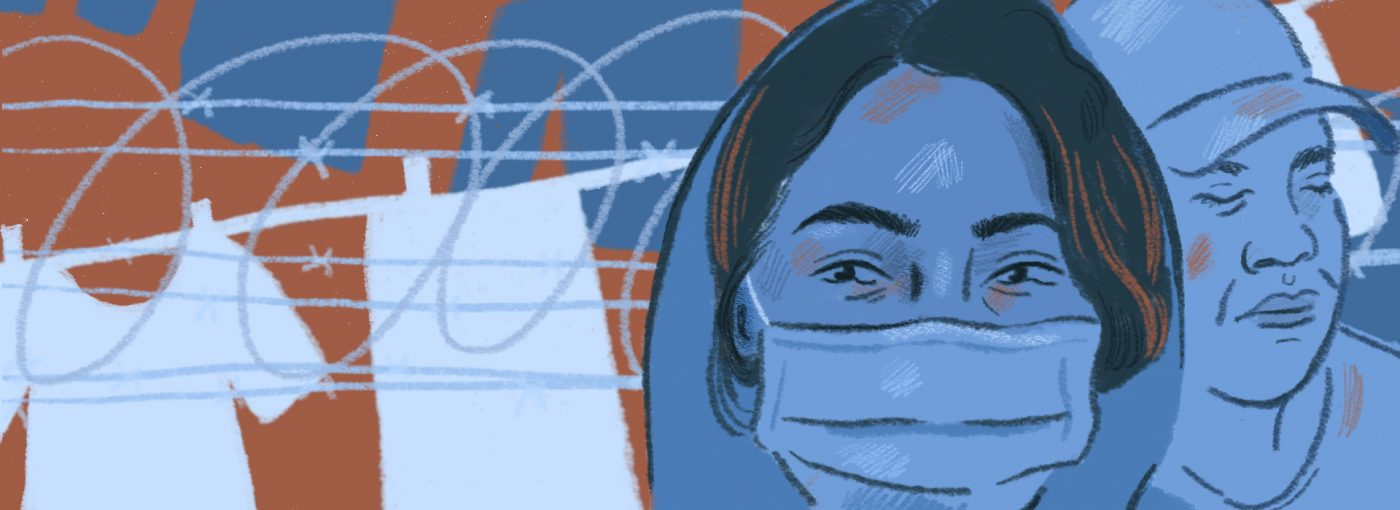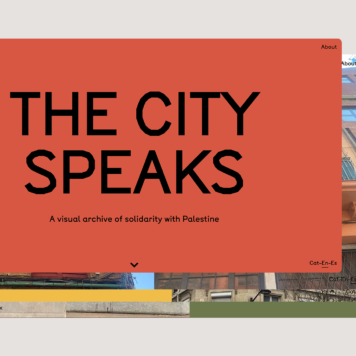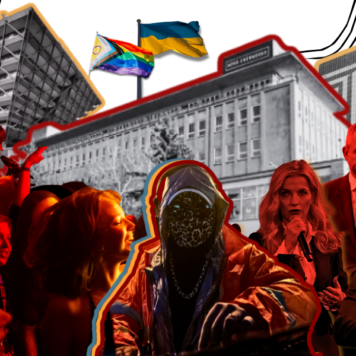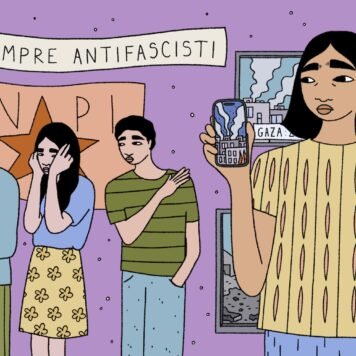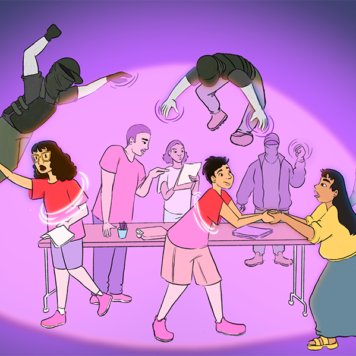On the island of Samos in Greece there exist two refugee camps. The Reception and Identification Centre (RIC) that neighbours the town of Vathy has recently been closed. The second camp is the Closed and Controlled Access Centre (CCAC) which opened in September 2021 in a remote part of the island, Zervou, a 90-minute walk from town.
With the closure of one and the opening of the other, it is important that the memories and experiences of those who passed through the RIC, whether for hours or years, don’t get forgotten. It’s paramount that the situation now is properly contextualised in the memories of what has gone before.
The new structure of the CCAC, which has been called “prison-like” by some of its inhabitants, is both a transitional space for those waiting for case decisions and a detention space for those facing deportation.
Out of sight, out of mind
Its remote location is part of an ongoing process of moving reception facilities further away from towns and cities, in an attempt by states to forget and to otherise the people housed there. To move people out of sight so the conditions they are forced to live in, and the desperate situations they face, go unnoticed.
In contrast, the old camp used to sit on the hillside right next to the main town, a constant reminder of the island’s abandonment by the State and the lack of effective support for those seeking asylum, or the island communities living alongside them.
Whilst the people have been moved along, the remains of the ‘jungle’, an informal area outside of the official gated section of the old RIC, remains intact. The memories it holds are a stark reminder of the lessons that have yet to be learnt, and the ongoing failures of Greek and EU support for displaced people.
The remains of the camp
In the Spring of 2022, I returned to Samos for the first time since the opening of the CCAC. I had expected to find the old camp dismantled, the tents and informal shelters removed.
Yet when I found it intact, it reminded me of the power of spaces, places and banal objects to tell the stories of the people that have passed through them, and to act as a reminder of the ongoing failures in support.
Not least the fact that problems that were faced by people in the old camp are once again being replicated in the new camp.
The official RIC was an old military base that had space to shelter 648 people in shipping containers fitted with toilets, running water, heating, and air conditioning. While many of these containers became damaged, unclean, and barely liveable over the years, they did at least provide some shelter from the weather, snakes, and rats.
As the numbers of people arriving to Europe via Samos increased, and the EU-Turkey deal signed in 2016 extended the length of time people could be stuck on the island from a few days to multiple years the RIC quickly became overcrowded.
When I first visited Samos in 2018 there were between 1,000 and 2,000 displaced people waiting for their claims to be processed. By January 2020, this number was closer to 8,000.
Objects and stories
Walking amidst the abandoned tents and self-built structures two years later, items remind me of conversations that I had there, and the lessons that should have been learnt from the years of emergency response provided in this space.
On a tree, close to the bottom of the camp, is an information sheet warning people about snake bites. I recall a conversation I had in the summer of 2021 with a young man who had been stuck on the island for three years.
“We sleep in tents throughout both the winter and summer; we sleep with mice and other wild animals like snakes and scorpions in the tent. It’s not right for humans to sleep in these conditions, but you don’t have any other options… It’s very, very hard.”
The same problems occurred in the RIC: in the summer people were faced with a lack of water and dehydration, in the winter they were faced with freezing temperatures and violent storms. These cyclical problems could have been planned for and provisions put in place, but instead the state continued to leave residents and NGOs to fill the gaps.
With the opening of the new CCAC, you would have hoped the lessons would have been learned – and yet there is no shade to protect from the heat of summer, there is flooding in the winter, and in May 2022 a broken pump severely limited access to running water.
As I continued to walk amongst the old camp, I came across a camp stove and water containers. A stark reminder of the lack of water available for people in ‘the jungle’.
Yet again, it was left to volunteers, activists and residents to ensure access to basic provisions and NGOs set up water tanks to ensure access to running water for drinking, cooking and washing.
I also found a swing hanging in the trees, built out of an old car seat. This forgotten object, testimony to the hours children spent here, reminded me of a conversation I had with an Afghan parent. We spoke of their concerns for the children whose lives had been put on pause for years as they awaited an answer to their asylum claim.
The politics of time
“The most important thing for people here is time. We’ve lost so much time, and we cannot bring it back. So, when I see the teenagers here, I think about how they should be in school or in university. They need to study for their future, and we need them to study so they can become the next generation of teachers, engineers and bosses.”
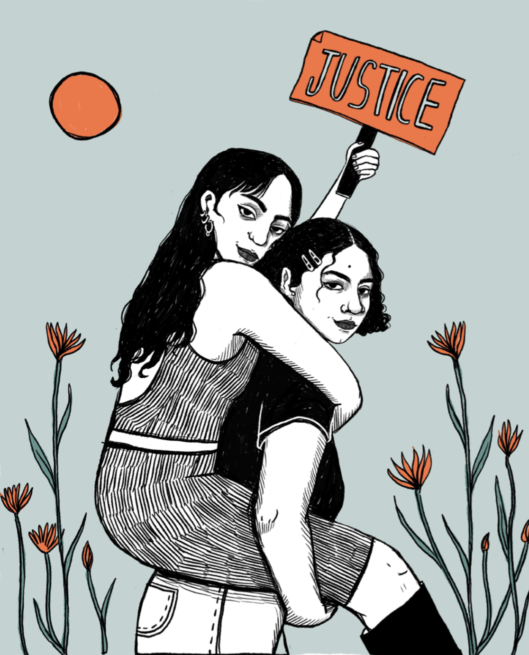
Join our mailing list
Sign up for shado's picks of the week! Dropping in your inbox every Friday, we share news from inside shado + out, plus job listings, event recommendations and actions ✊
Sign up for shado's picks of the week! Dropping in your inbox every Friday, we share news from inside shado + out, plus job listings, event recommendations and actions ✊
Time is something that comes up constantly on Samos. Time as the thing being wasted, as the thing forcing life to be paused. Time is lost in the asylum process; time is lost waiting in queues to register, or to collect food. Time that could be spent learning, working and feeling productive. With the 90-minute walk to town from the new CCAC the opportunities to study or work are made to feel even more limited or remote.
An abandoned camp on the hillside is a poignant reminder of the cumulative loss of time, of the many people, over the many years, who have passed through this space: the time taken from them which they will never get back.
The situation now
There are currently around 350 displaced people on the island. As the state prepared for the move to the new CCAC in Zervou in the Summer of 2021, they vastly reduced the number of people allowed on the island. Some were moved to the mainland to have their cases heard there, and others left, fearing the new prison-like structure and what this would mean for their freedom of movement.
The CCAC looks very different from the old camp. People are housed in containers; all the informal structures are gone. Yet the problems persist.
It is now June 2022, and the camp endured 17 days of limited access to running water, with new arrivals having no access to showers. Water being provided for drinking, washing and cooking, comes from plastic bottles.
Securitisation and criminalisation
The problems in the CCAC, a structure financed by 43 million Euros of EU money, started within weeks of opening as the containers inside the highly securitised structure had problems with broken fixtures and fittings.
This is a space with only one entrance and exit. It has a curfew , meaning people are not allowed out between the hours of 9pm and 7am. In fact, some people are not allowed out at all, depending on the status of their asylum case.
Those who can enter and exit within curfew are faced with a highly securitised process, with bags and jackets put through airport-style x-ray machines.
There are layers of barbed wire fencing, security cameras and staff. This environment caused one person currently living there to tell me: “I can’t say this is a new camp. It is a prison”. This securitisation is where the money was spent, not on guaranteeing the rights of those inside.
The CCAC might appear different to the informal shelters on the hill, but the same mistakes are being repeated.
The criminalisation of those seeking safety and asylum, the othering and the distancing have been magnified. The need for access to sustainable, integrated housing, proper schooling, jobs and healthcare remains unresolved.
The camp on the hill may no longer shelter people, but it remains a poignant reminder of the failures of the European border regime and the harms it continues to perpetuate against people who arrive in Europe, hoping for a new life, and are instead shocked at what they find, that “this was Europe”.
What can you do?
- FURTHER READING
- How Greece Secretly Adopted the World’s Most Brazen—and Brutal—Way of Keeping Out Refugees
- BBC World Service – Business Daily, Rise of the high-tech border industry
- Criminalisation at Europe’s borders: Uncovering the risks faced by those who support asylum seekers
- A Hope More Powerful Than the Sea: The Journey of Doaa Al Zamel by Melissa Fleming
- The Lightless Sky: My Journey to Safety as a Child Refugee by Gulwali Passarlay
- Border and Rule: Global Migration, Capitalism, and the Rise of Racist Nationalism by Harsha Walia
